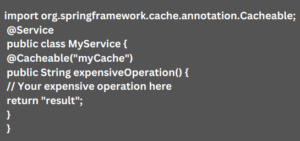Learn how to use Redis as a Distributed Cache for a Spring Boot application. Our Redis Support team is here to help you with your questions and concerns.
Redis Distributed Cache Spring Boot | An Intro
Did you know we can use Redis as a distributed cache to store and retrieve frequently used data to improve the performance and scalability of our Spring Boot application?

Redis is an in-memory data store that is often used as a cache due to its speed and versatility. Furthermore, when we integrate it with Spring Boot, it offers an easy way to implement caching.
Let’s take a look at how to set up and use Redis as a distributed cache in a Spring Boot application:
- First, we have to add the needed dependencies to our Spring Boot project. We need the spring-boot-starter-data-redis dependency, which includes the Spring Data Redis library and the Redis driver for connecting to a Redis server.
- Then, head to the application.properties or application.yml file and configure the connection to our Redis server. We have to specify the Redis host and port:
spring.redis.host=your-redis-host
spring.redis.port=6379Additionally, we can configure other properties like authentication, SSL, and connection pooling.
- Next, we can use the @EnableCaching annotation to enable caching in our Spring Boot application. This is done by adding it to one of our configuration classes:

- Then, we can cache the results of a method by annotating it with @Cacheable. We can specify the name of the cache and a key generator:

Here, the results of the expensiveOperation method are cached in a cache named “myCache.”
- Furthermore, we can configure cache eviction strategies with the @CacheEvict annotation to remove entries from the cache when certain conditions are met.
- Additionally, we can customize the caching behavior further by defining cache managers, specifying expiration times, and using different cache stores.
[Need assistance with a different issue? Our team is available 24/7.]
Conclusion
In brief, our Support Experts demonstrated how to use Redis as a distributed cache to store and retrieve data of our Spring Boot application.
PREVENT YOUR SERVER FROM CRASHING!
Never again lose customers to poor server speed! Let us help you.
Our server experts will monitor & maintain your server 24/7 so that it remains lightning fast and secure.







0 Comments